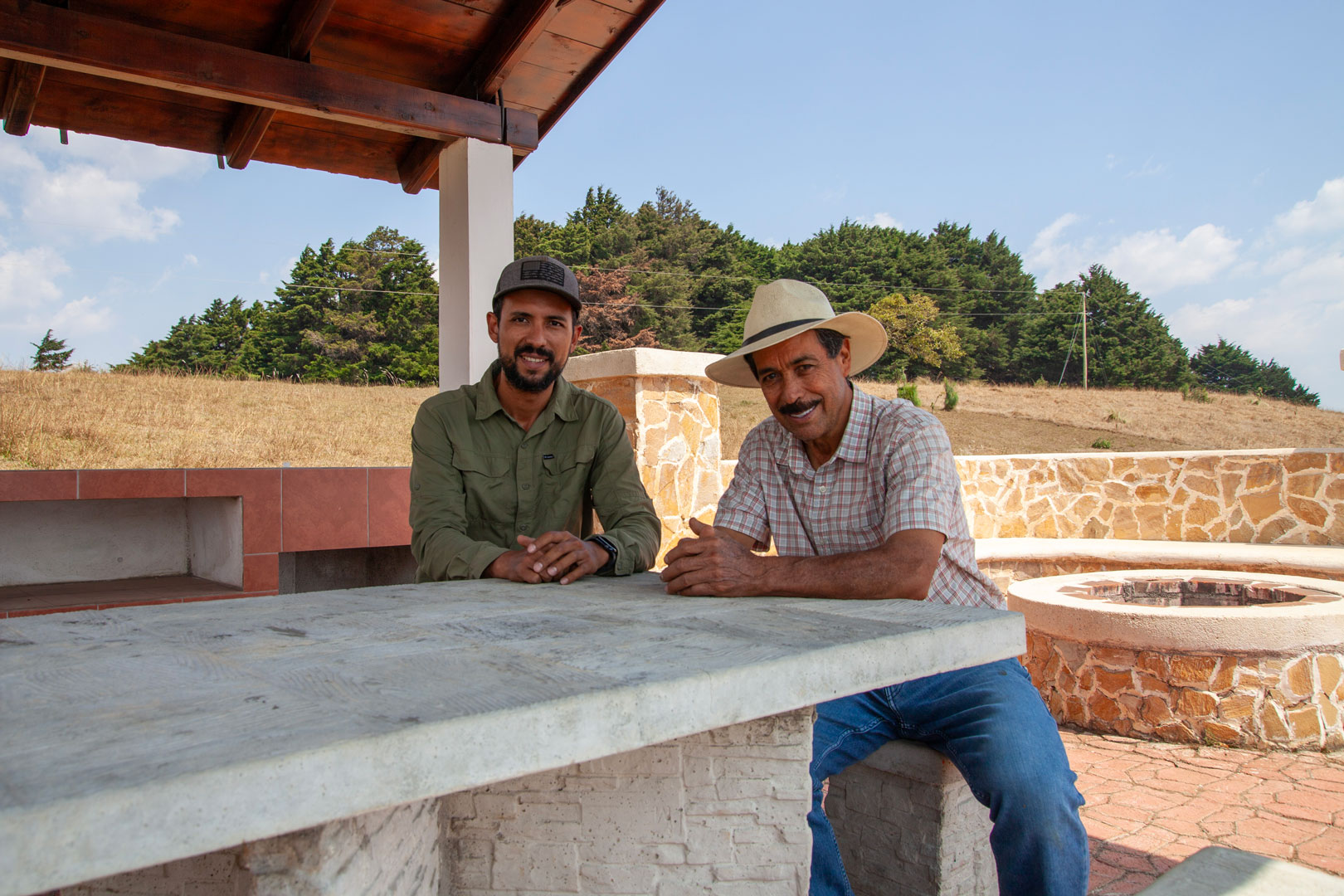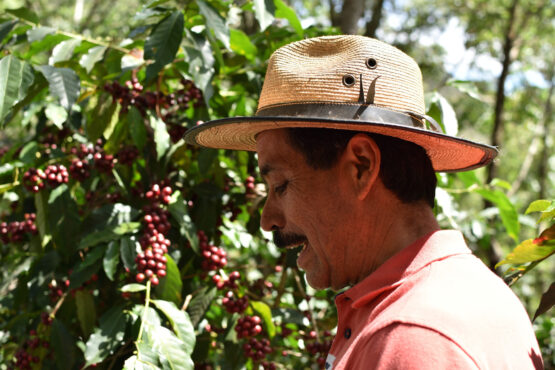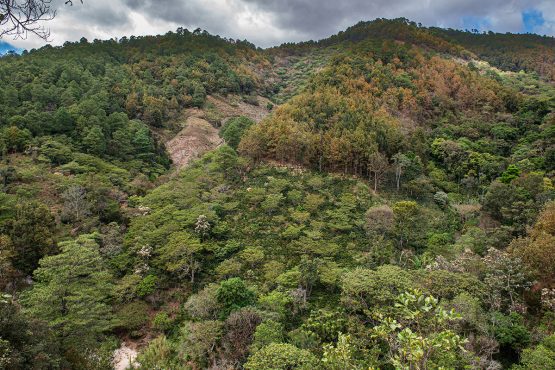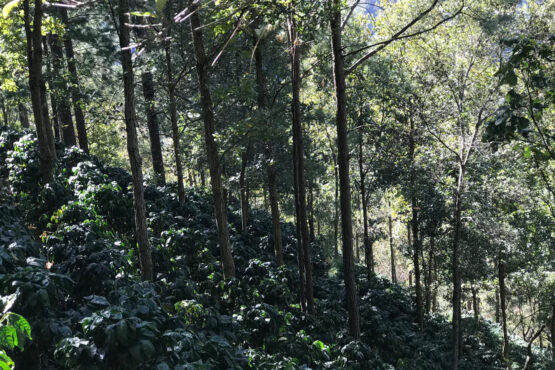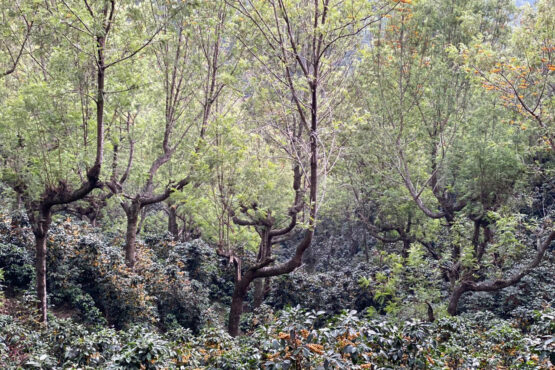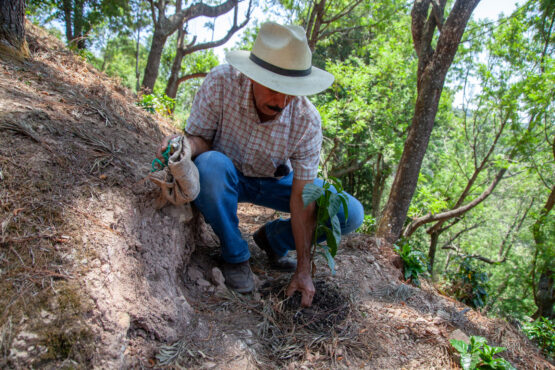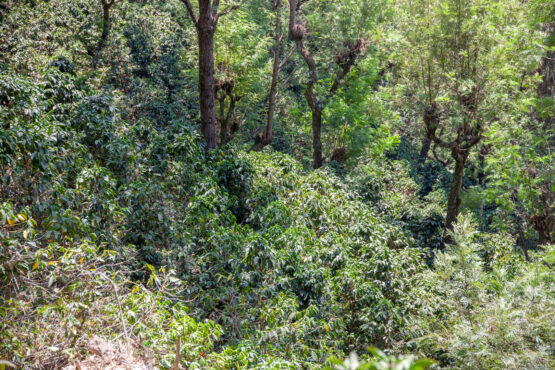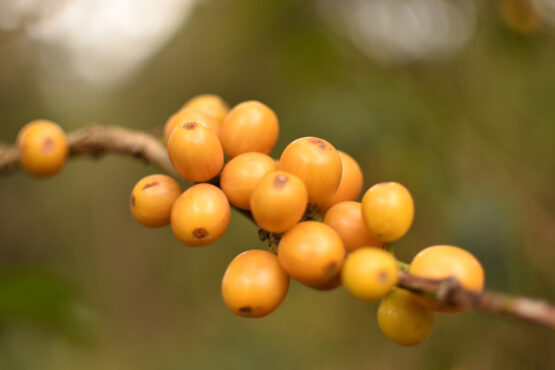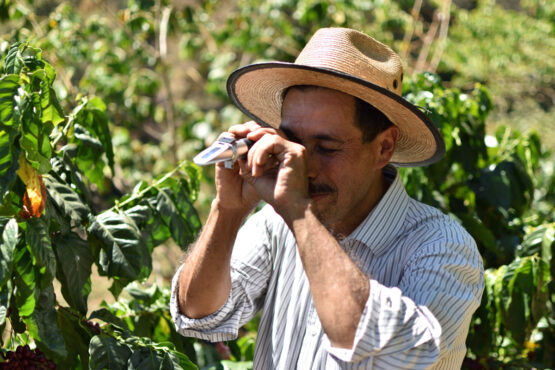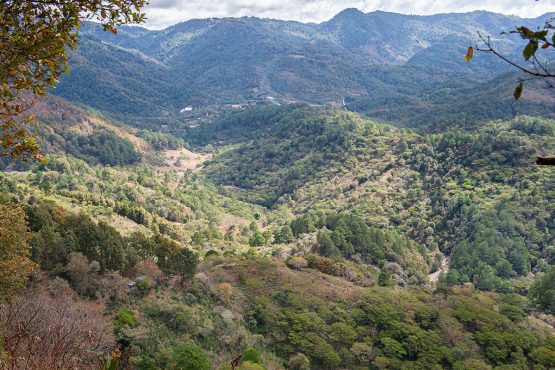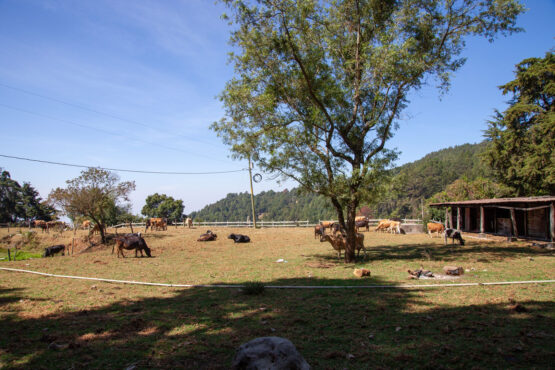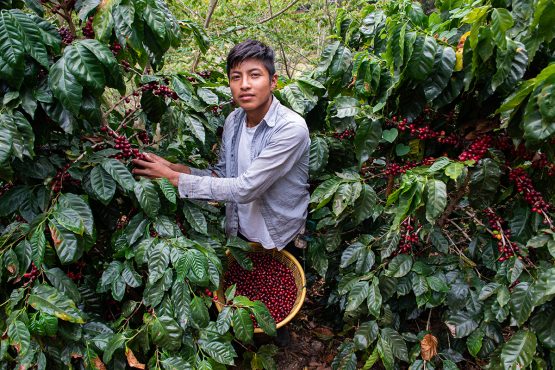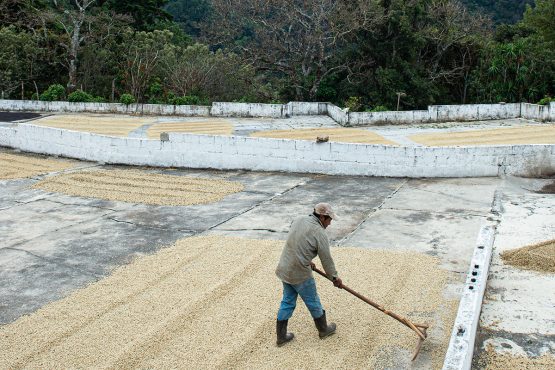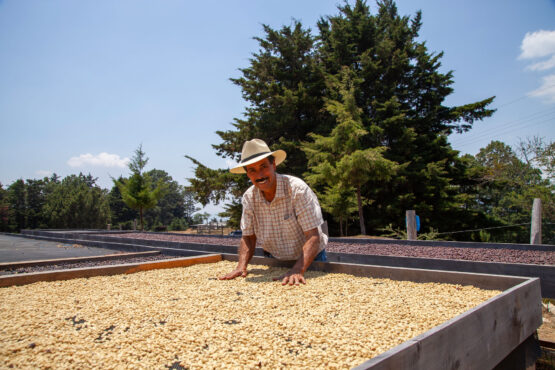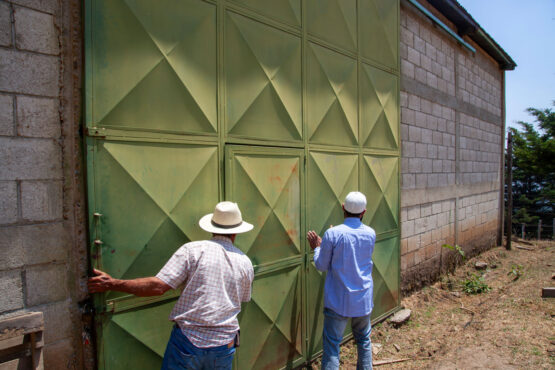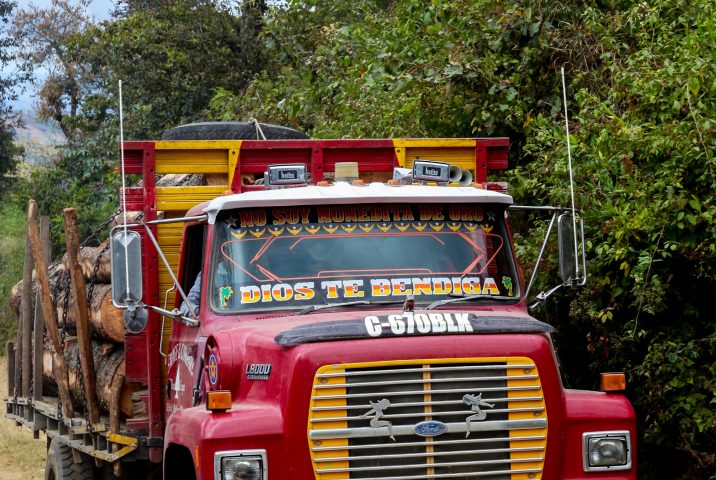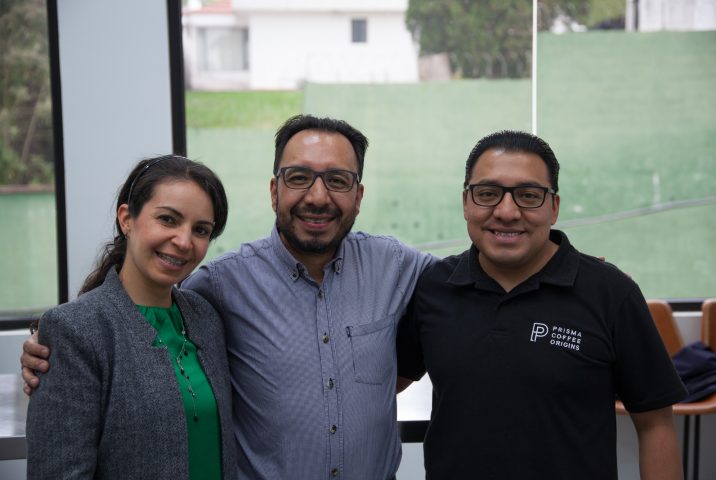La Bugambilia Pacamara
Bright, juicy and complex with grape, strawberry, dark chocolate and elegant florals.
This Pacamara micro-lot is from a plot of land called La Bugambilia, one of five parcels of land that make up El Guatalón estate. The farm is located in the up-and-coming coffee region of Santa Rosa in Guatemala. La Bugambilia and El Guatalón are owned and managed by third-generation farmer Guillermo Juárez and his son Willy.
The La Bugambillia plot is 40-hectares in size – 18 of which are dedicated to coffee, with the remainder reserved for native forest. It sits at an elevation of 1,450 – 1,850m above sea level and is named after the Bougainvillea plant which is very common in Guatemala and has vibrant pink and purple flowers. Pacas, Caturra, Pacamara, Bourbon Amarillo and Gesha are all grown on this estate. This lot is 100% Pacamara – a variety that thrives on this plot and regularly places in the Cup of Excellence competition.
ABOUT EL GUATALÓN
El Guatalón estate is truly a family affair! The estate was first established in 1910 by Daniel Juárez, who planted it with Typica and Mundo Novo varieties, and was the first commercial coffee plantation in Santa Rosa. Daniel’s son, Juan Alberto Juárez Reyes, took over the farm in the 1970s, and focused on growing the estate’s commercial operations and expanding its land, before handing the farm on to his own son, Guillermo, in 2010. Today, Guillermo looks after the estate’s agronomy, while his son Willy manages the family’s wet and dry mills.
When Guillermo took over the estate, he was determined to focus on producing specialty coffee to achieve higher prices for their efforts. He had heard of the Cup of Excellence and decided to participate. In 2012 they came very close to qualifying (finishing 24thand just outside the final line up of 23 farms) and were thrilled to receive their first accolade in 2014. Since then, the farm has placed nearly every year, most recently in 2024 when two lots placed sixth in both the washed and natural processing categories. These awards and this recognition is very motivating for Guillermo, who loves the challenge:
“We want to go further. We know we can deliver higher quality. After all, we know living and succeeding is just about that: always make an extra effort.” – Guillermo Juárez
El Guatalón estate is divided by altitude and soil type into 5 parcels of land – La Bugambilia, El Cuje, Los Pajuiles, Guatalón (all four in the municipality of Santa Rosa de Lima) and La Loma, the highest elevated plot, which is located in neighbouring municipality of Mataquescuintla. Planted 32 years ago, the family see La Loma as the future of their business, because the warmer climate Santa Rosa has experienced in recent years has led to greater amounts of pest and disease affecting La Bugambilia and El Guatalón. This has led to a decline in production at these, which the Juárez hope will eventually be made up by La Loma.
Currently, the La Loma plot is mainly planted with older Pache variety trees, so Don Guillermo has invested in Panama Gesha and SL28 to increase the value of the parcel’s production. Along with these, the rest of El Guatalón has many other varieties growing – each generation has introduced new varieties to the farm including Typica, Mundo Novo, Pache San Ramón, Caturra, Catuaí and most recently Villa Sarchi, Pacamara and Maragogype. These varieties flourish in different microclimates and so each has been carefully planted where it is best suited across the estate. Coffee is grown under the shade of Garvilea and Cuje trees (both from the Inga family), as well as some native oak and cedar trees. The reason for this is twofold: it protects all coffee trees from direct sunlight and harsh winds, and it allows for the farm to contribute to the region’s efforts in protecting the local flora and fauna.
Because the region is a high rain catchment area, it is very dense with native pine and native wildlife, including a species of wild turkey under the threat of extinction. An intrepid man, in early 2024 Don Guillermo decided to explore areas of the farm he’d never been to before, to get a better sense of the property’s biodiversity. As he travelled up the hill that leads to La Loma, Don Guillermo found many beautiful waterfalls and creeks, with plenty of wild turkey fluttering about, singing and bathing in the fresh water. He also found evidence of a local wild cat known as jaguarundi, which only increased his determination to keep vast areas of El Guatalón as a reserve, and to farm following practices that have a minimal impact on the land.
This exceptional lot was sourced with the help of export partner Eduardo Ambrocio and the team at Prisma Coffee Origins. Eduardo, who is also a Head Judge for Cup of Excellence, is one of the best cuppers we know — and through his work in Guatemala, we are connected to several quality-focused producers, who grow coffee at a small to medium scale. Head here to learn more about Eduardo’s work in Guatemala.
ABOUT SANTA ROSA
Though the Santa Rosa department is technically not one of ANACAFE’s official coffee-growing origins, it has become one of the country’s most recognised regions. Farms in Santa Rosa are spread out across the expanse of the department – meaning climatic conditions vary drastically from one estate to another, resulting in a multitude of unique cup profiles.
The region is known for producing much of the country’s commercial-grade coffee, but the range of micro-climates and rich, volcanic soils found in Santa Rosa offer great potential for specialty-grade production. This is evident from the 2022 Cup of Excellence results, when 5 coffees from Santa Rosa were awarded for the first time in the competition’s history.
The departments’ north is a valley surrounded by mountains, creating a corridor for dry winds from the Atlantic Ocean to travel south all the way to the Pacific. Because of this, conditions in the north tend to be drier and experience earlier harvests, while the south is more humid and experiences longer rainier seasons. In recent years, Santa Rosa has greatly experienced the effects of climate change, with many farmers choosing to parcel up their land to sell while the value of land is still high.
Santa Rosa is the traditional home of the Xinka people, some of Guatemala’s earliest inhabitants. Having arrived from the Andes mountains via the Pacific Ocean, the Xinka are one of the country’s only indigenous communities that does not share cultural or linguistic similarities with the Maya, Guatemala’s largest indigenous group. While less than two-percent of the modern-day population identify as Xinka, they have become one of the loudest voices in the fight for Guatemala’s environmental preservation. In recent years, the Xinka have stood up to multinational mining companies that buy up land and destroy established farms in search for silver. The community has banded together and fought to be recognised as the region’s traditional owners, who want their land to be used for more environmentally and socially sustainable projects.
HOW THIS COFFEE WAS PROCESSED
Harvest at La Bugambilia (and all El Guatalón plots) began in December and concluded in March. In addition to 10 full-time workers, around 40 seasonal workers were employed to selectively handpick the coffee. This activity was supervised by Guillermo and Willy on a daily basis, who either traveled from home or spent the night at the farm.
All coffee from El Guatalón was processed at the family’s wet mill in Samororo (which is located close to the La Loma plot). Here, cherry was pulped and then wet parchment was fermented for 24 to 40 hours. The beans were then washed to remove any remaining pulp and carefully dried on patios and where they were turned regularly to ensure they dried slowly and evenly. Once dry, the coffee was rested in parchment until it was ready for export. Throughout the process, all organic by-products were recycled and reused, and the water was treated in sedimentation tanks.
HOPES FOR THE FUTURE
Guillermo and Willy don’t see themselves expanding much on volume, but rather want to focus on quality and continue to explore different processing methods. Willy is especially interested in understanding more about fermentation and how it can impact the quality in the cup. He is currently taking courses and training to have a better understanding of processing techniques, which he hopes to continue to implement in the coming harvests.
WHY WE LOVE IT
This is the sixth year we have had a Pacamara micro-lot from La Bugambilia (our first lot was purchased in 2020) and it is, without fail, one of our favourite lots on the cupping table year after year. Due to very small yields this year we feel very fortunate to be able to feature this coffee again – it is tropical, floral and pretty. We hope you enjoy it!
